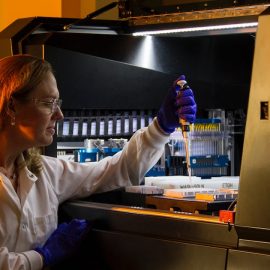

This article is an excerpt from the Shortform book guide to "Superforecasting" by Philip E. Tetlock. Shortform has the world's best summaries and analyses of books you should be reading.
Like this article? Sign up for a free trial here .
What’s a Fermi estimation problem? What kinds of information does the Fermi problem probe for?
A Fermi problem is a problem that involves making a justified estimation about quantities, degrees, probabilities, or variances. Fermi problems are solved by breaking down seemingly impossible questions into smaller and smaller questions. The idea is that eventually, you’ll be able to separate questions that are truly unknown from questions for which you can at least make an educated guess.
Below is an example of a Fermi problem.
Example Fermi Problem
It’s much easier to understand the Fermi estimation technique with an example, such as “How many oil changes are performed in one day in the U.S.A.?” Unless you happen to work at Jiffy Lube, you probably have no idea how to even begin to answer this question. At best, you might take a wild guess. But Fermi’s approach is more methodical.
To answer this question, we need to determine what information we’re missing. What would we need to know to figure this out? The number of oil changes probably depends on the number of cars in the country and how often those cars need an oil change. So, to figure out how many oil changes happen in a given day, we need to know:
- The number of cars in the U.S.
- How frequently cars need an oil change
If we happened to know the answers to either of those questions, great! But if we don’t, we can break them down even further into questions that we can answer. Let’s do that now.
To figure out the number of cars in the U.S., we need to know:
- The population of the U.S.
- The percent of the population that owns a car
To figure out how frequently cars need an oil change, we need to know:
- How many miles cars can go between oil changes
- How many miles the average car is driven in a year
We may still need to wildly guess the answers to some of these questions. However, because those wild guesses are only for smaller parts of the overall question, we’re still likely to be more accurate than if we’d just thrown out an answer to the original question.
Solving the Problem
To solve this problem, we’ll need to come up with some estimates for each of those questions. (Shortform note: Fermi questions are commonly used in job interviews. To get the most out of this exercise, assume you’re in the middle of an interview and can’t look up the real answers, so you’ll need to rely on your best guess.)
- First, we need to know the population of the U.S. You might have a rough idea of this answer—it’s about 320 million people.
- Next, we need to know how many of those people own a car. This question isn’t as clear cut, so we can break it down further. Let’s assume that roughly 75% of the population can drive, which gives us 240 million drivers.
- However, not everyone who can drive owns their own car. Let’s assume there’s an average of two drivers in a household, and one car per household. That’s 120 million cars.
- If you have a car, you might remember that you’re supposed to change the oil after about 3,000 miles of driving. However, people are busy, and oil changes might not always be a priority. Let’s assume that the average car owner gets their oil changed after about 3,500 miles of driving.
- Now, we need to know how many miles the average car is driven in a year. This is a tough one, so let’s take a wild guess of 10,000 miles per car, per year.
If each car owner gets an oil change after 3,500 miles of driving and drives 10,000 miles per year, they get about three oil changes per year. (Shortform note: In Fermi estimation, there’s no need to stress over the exact math. Feel free to round numbers up or down to make the math easier since the end goal is a very rough guess, not an exact answer.)
Three oil changes per year for 120 million cars is 360 million oil changes per year, total. However, the question asked about the number of oil changes in one day, not one year, so we need to divide this further. We know there are 365 days in a year, but most auto shops aren’t open seven days a week, so let’s bring that down to 320 days per year in which oil changes are being performed. To get our final answer, we divide 360 oil changes per year into 320 days, which equals about 1.1 million oil changes per day in the U.S.
What’s the real answer? Industry data shows that about 450 million oil changes happen per year in the United States. If we keep our estimate of 320 working days per year for oil changes, that’s 1.4 million oil changes per day, which is incredibly close to our rough estimate!
| Tips for Improving Fermi Estimations Fermi problems are often used during job interviews to evaluate a candidate’s critical thinking skills. For instance, Google often asks interviewees subject-specific Fermi questions, such as “How many photos are taken on Android phones per day?” If you want to practice this technique, here are some tips to improve your estimation skills: Memorize basic facts, such as the population of the world, the speed of light, or the average number of people per household. Memorize basic unit conversions, like the number of feet in a mile (5,280) or pints in a gallon (eight). When you finish a problem, use common sense to double-check your answer. For example, if you go through all the steps of answering, “How many golf balls would it take to fill a football stadium?” and your answer is “350,” you may need to go back and check some of your estimates. |

———End of Preview———
Like what you just read? Read the rest of the world's best book summary and analysis of Philip E. Tetlock's "Superforecasting" at Shortform .
Here's what you'll find in our full Superforecasting summary :
- How to make predictions with greater accuracy
- The 7 traits of superforecasters
- How Black Swan events can challenge even the best forecasters






